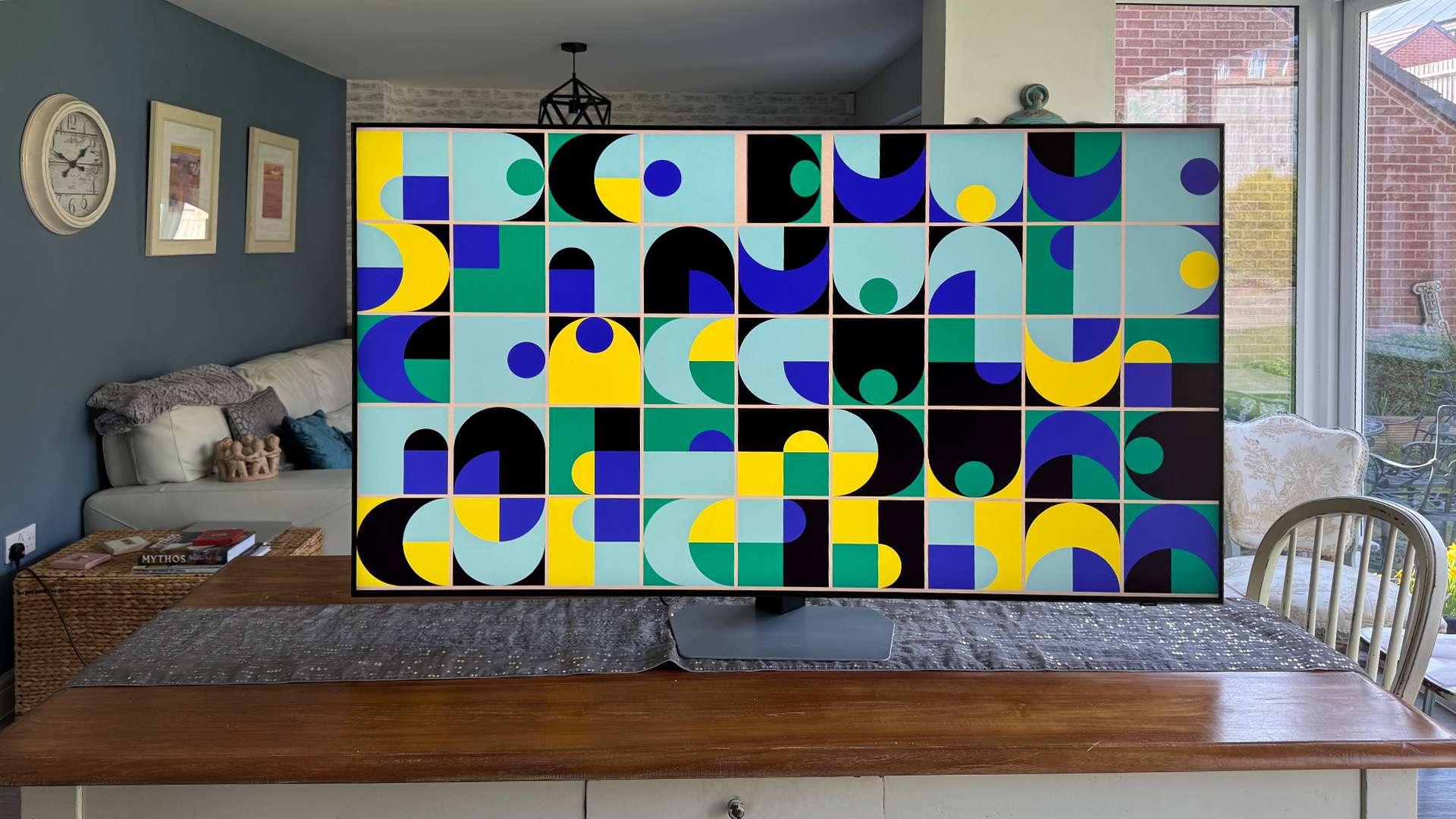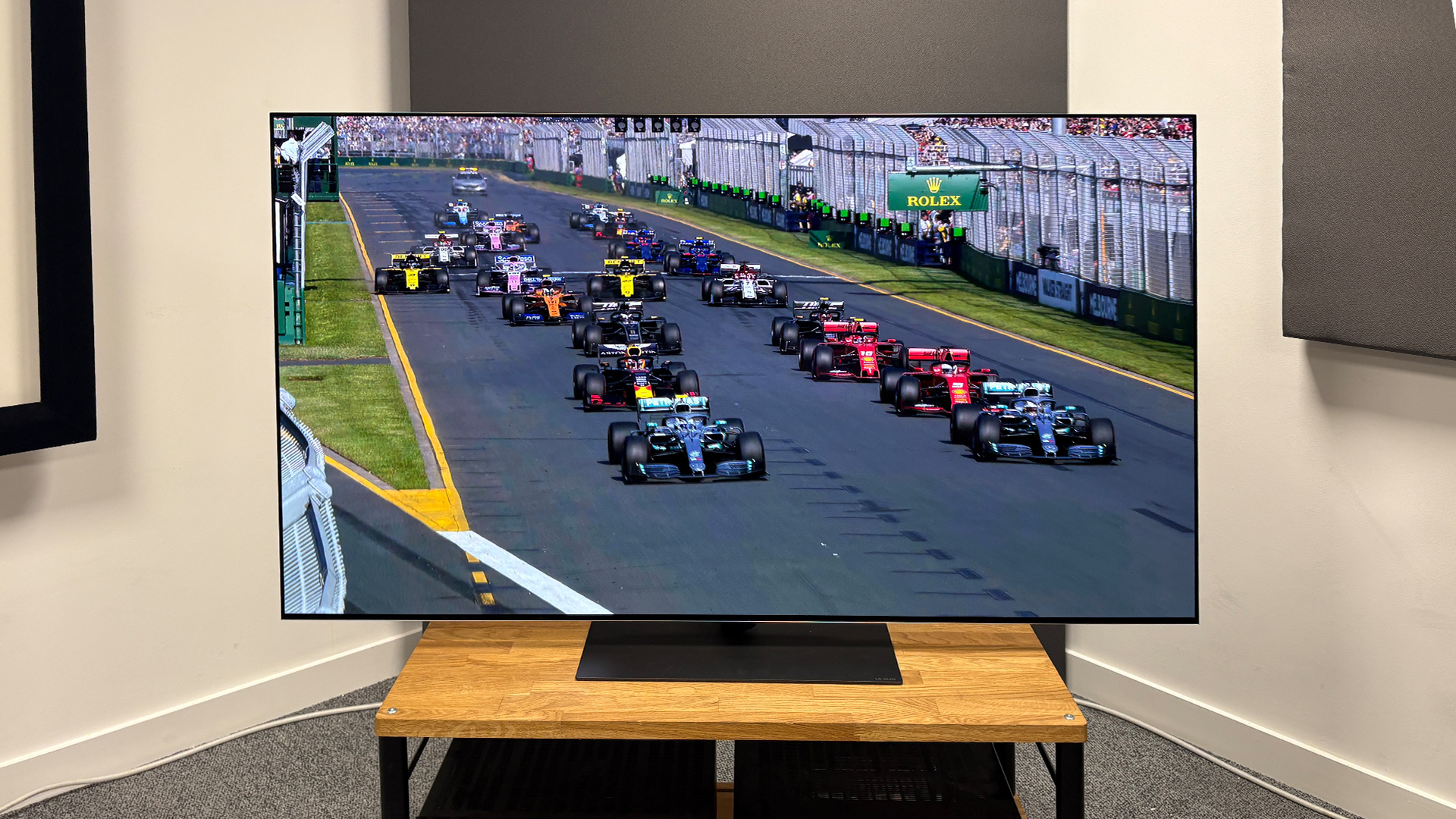What Hi-Fi? Verdict
Provided you don’t mind a bit of tinkering and can afford it, the Samsung QN90F is an outstanding living room TV
Pros
- +
Outstanding backlight control
- +
Well designed Standard and Filmmaker Modes
- +
Excellent gaming display
Cons
- -
No Dolby Vision
- -
Expensive by LCD standards
- -
Needs tweaking to look/sound its best
Why you can trust What Hi-Fi?
Due to its long-running (but now happily done and dusted) objection to OLED technology, Samsung has spent most of the past decade perfecting the art of premium LCD TVs.
With upstart brands such as TCL now selling excellent LCD TVs for crazily cheap prices, though, and good mid-range 65-inch OLED TVs now coming down in price, can a high-end LCD TV such as the QN90F really still make its mark?
Price
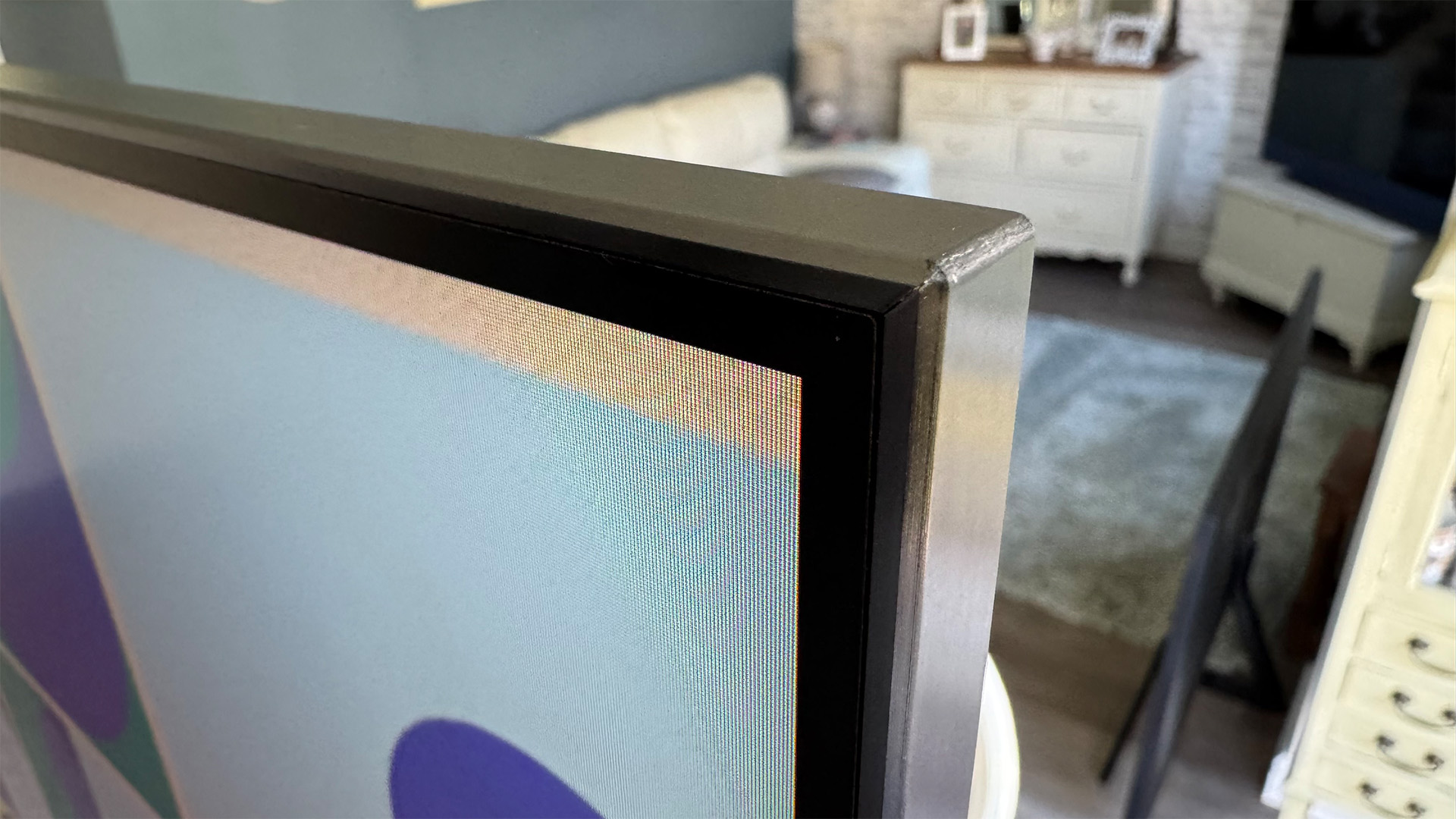
Looked at by itself and with Samsung’s long history of excellent premium LCD TVs for context, £1899 / $1899 / AU$2999 doesn’t look unreasonable for the brand’s current top-tier 65-inch LCD TV. By the time you’ve thrown remarkably affordable sets such as TCL’s C8K and C7K into the equation, however, things start to look a bit… tricky. A situation not helped by the way the QN90F’s price also gets it within a couple of hundred pounds of excellent step-down OLED sets such as the LG C5 and Samsung’s own S90F.
Cheaper is cheaper, though. And, as we’ll see, the QN90F has attributes that potentially make it unique in its field.
Design
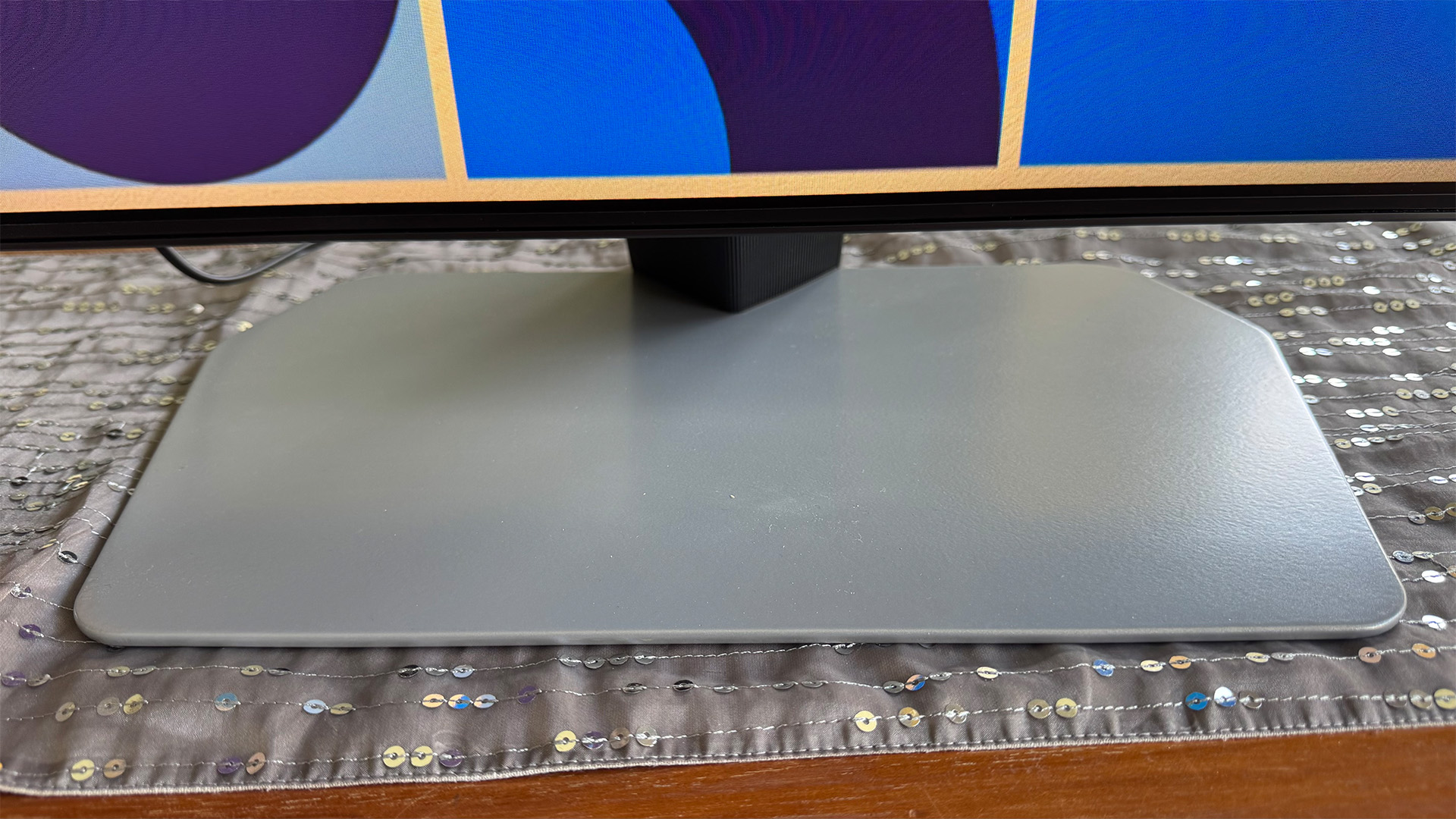
The QN90F sets about establishing its premium credentials right off the bat with a lovely combination of a narrow screen frame, slender rear and a beautifully finished silver metal desktop plate stand that’s small enough to sit discreetly on even very slender, unobtrusive pieces of furniture. The TV is hefty and solidly built despite its svelte appearance, too.
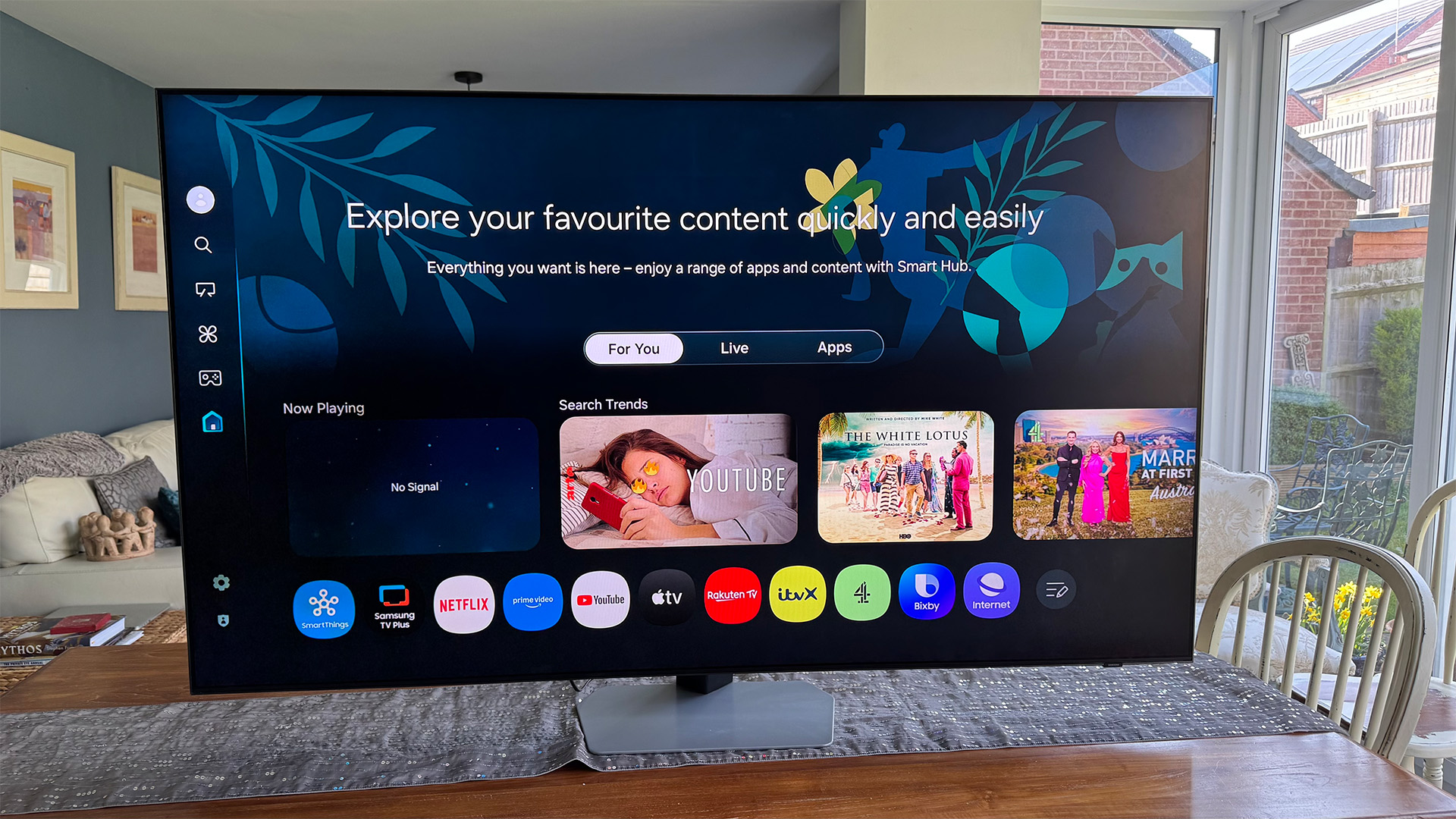
Screen size 65 inches (also available in 43, 50, 55, 75, 85, and 98 inches)
Type Quantum Dot LCD
Backlight Mini LED (720 dimming zones)
Resolution 4K
HDR formats HLG, HDR10, HDR10+
Operating system Tizen
HDMI inputs x 4 (all 48Gbps HDMI 2.1)
Gaming features 4K/165Hz, 4K/120Hz, VRR, ALLM
Input lag 9.8ms at 60Hz
ARC/eARC eARC
Optical output? Yes
Dimensions (hwd, without stand) 83 x 145 x 2.7cm
Note that unlike previous Samsung flagship 4K LCD TVs, the QN90F does not feature an external One Connect box. Instead, its connections and processing are all built into the TV’s main chassis.
The QN90F ships with two remote controls: one ‘regular’ button-heavy one, and one stripped-back one. The regular remote doesn’t look like much, but is actually very easy to use. Most people, though, will spend most of their time with the leaner ‘smart’ remote. Partly because it just has fewer buttons to learn your way around, partly because it’s got a solar panel on its back to save you from having to ever put new batteries in it, and partly because it carries a mic so that you can control the TV to a surprisingly deep level just by talking to it.
The latest hi-fi, home cinema and tech news, reviews, buying advice and deals, direct to your inbox.
Features
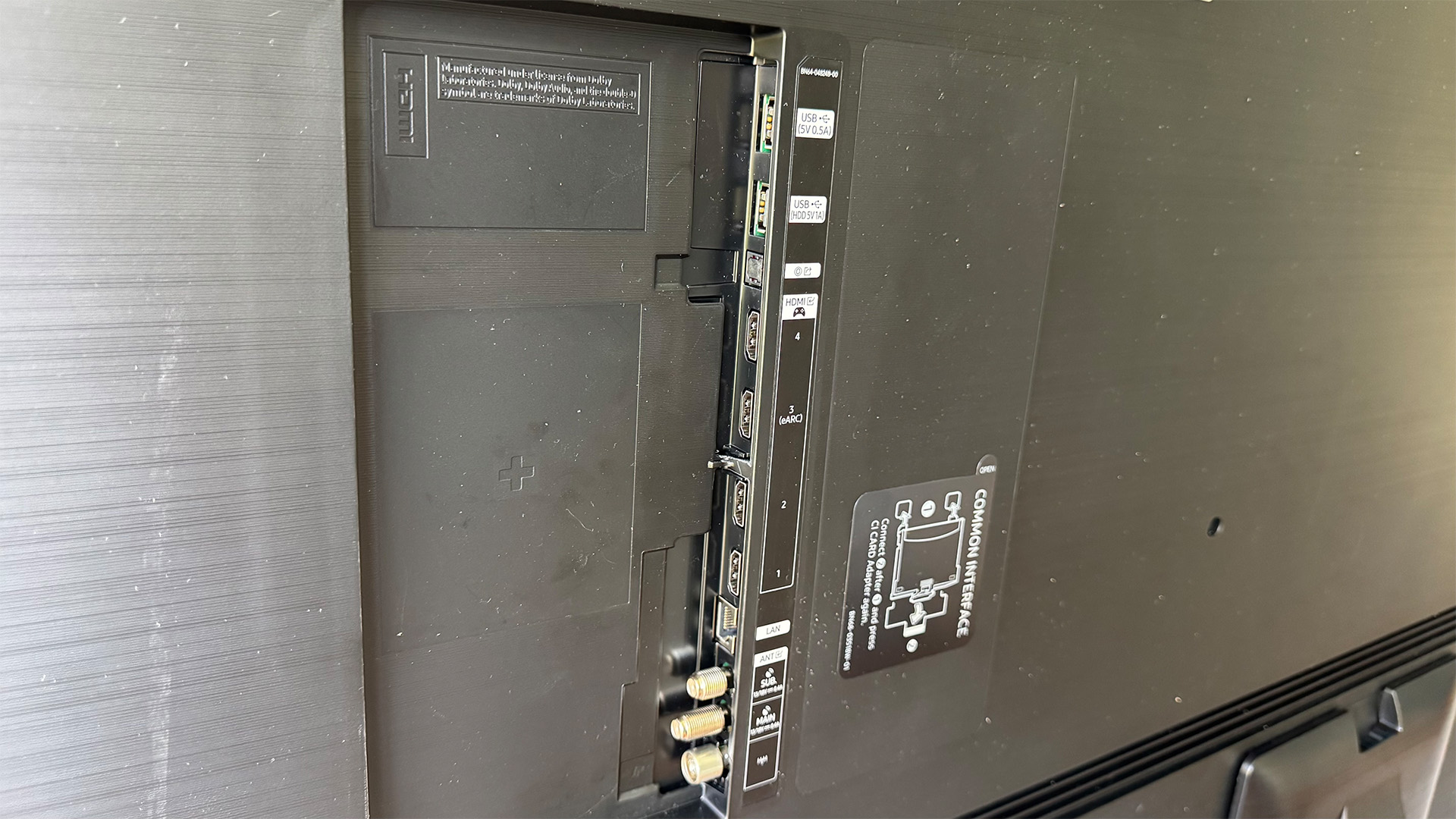
As you’ve hopefully picked up by now, the QN90F is another in this year’s long parade of Mini LED TVs. Once the exclusive preserve of the ultra high-end LCD world, Mini LEDs are now starting to feel pretty much ubiquitous from the LCD mid-range up.
In the QN90F’s case, the diddy lights illuminating its screen are only a fiftieth the size of Samsung’s ‘big old’ LEDs, opening up all sorts of extra light control and brightness potential. Especially considering that the Mini LEDs are backed up by a local dimming system that, in the case of our 65-inch sample, features 720 separately controlled zones.
There are TVs around now that boast more dimming zones than that; Hisense’s U8Q boasts more than 2000 in fact, despite costing less than the QN90F. We’ve been around the block enough times to know, though, that it’s not the number of zones you’ve got but what you do with them that counts. And no TV at this level that we know of is potentially better equipped to make more expert use of the dimming zones available to it than the QN90F, thanks to its deployment of a picture processing system that includes no less than 128 AI neural networks. That’s a massive 108 neural networks up on the already acclaimed processing engine of the QN90F’s predecessor.
The panel in the QN90F is a VA one, as is almost always the case with Samsung TVs, meaning it should be capable of delivering better native contrast than the IPS alternative.
The panel is finished off, too, with one of Samsung’s remarkable anti-glare filters. These work so well at suppressing reflections that they allow you to forge a direct connection with what you’re watching – even in rooms that aren’t fully blacked out – that has to be seen to be believed.
Another facet of the QN90F’s panel design that helps Samsung explain why it’s more expensive than some rivals is that it uses what the brand (backed up by the independent TUV Rheinland Lab in Germany) calls a Real Quantum Dot Display. Here, blue LEDs are applied to red and green Quantum Dot sheets as per IEC standards, rather than white LEDs feeding into red, green and blue QD sheets.
Going back to the QN90F’s heavily AI-driven NQ4 AI Gen3 Processor, it’s touted as boasting a 2x faster NPU, 2.1x faster GPU and 17 per cent faster CPU than its 2024 predecessor, and is claimed to be particularly effective at upscaling HD and SD content to the screen’s native 4K resolution and dynamically tone mapping HDR content to the fullest extent of the screen’s considerable capabilities.
Yet more AI-enhanced elements are focused on enhancing motion clarity even with small moving objects by essentially predicting the trajectory of the moving object, upgrading SDR to HDR without making it look bobbins, and enhancing colour saturations.
Purists wincing at some of the above should be assured, though, that all these processing enhancements can be turned off if you don’t fancy them – and an accuracy-based Filmmaker Mode preset has been provided that turns off most processing by default, too.

Gamers will be pleased to hear that all four of the QN90F’s HDMI ports are specified to the full 48Gb HDMI 2.1 bandwidth, allowing them to handle the latest key gaming features of 4K/120Hz (actually Samsung’s TV can get up to 165Hz), VRR (including the AMD Freesync Premium Pro system), and ALLM switching.
In its fastest Game mode setting, the QN90F can render incoming 60Hz images in just 9.8ms, which pretty much halves with 120Hz feeds. The option is available, though, to sacrifice a bit of lag speed in return for gentle motion processing if that suits a particular title you’re playing.
A dedicated Game Bar menu becomes available when the TV knows it’s displaying a game source, providing options for selecting genre-based picture presets, calling up an onscreen crosshair, zooming up a mini map, selecting super- or ultra-wide aspect ratios if you’re playing a PC game that supports that, or elevating the brightness of just dark areas of the picture to make it easier to spot lurking enemies.
The Tizen smart system Samsung uses on the QN90F even carries a dedicated Gaming Hub screen accessible directly from the Tizen home screen that brings together your streaming and physically connected game services and devices.
Tizen also carries a prodigious array of video streaming services, including all the key UK terrestrial broadcaster catch-up apps alongside the global big hitters. The UK broadcaster catch-up services aren’t offered as part of either the Freeview Play or Freely ‘umbrella’ apps, but at least they are there on an individual app basis.
There’s so much going on with Tizen that it takes a little time to fully find your way around it – but it’s worth the effort. Especially once the AI-driven content recommendation systems (which can work across multiple individually tailored user profiles) really kick into gear after you’ve been using the TV for a while.
Last but not least on the QN90F’s expansive feature list are a few cool sound features. Samsung’s Object Tracking Sound system combines clever processing with speakers arranged around the TV’s bodywork to produce sound effects that appear to be coming from the correct part of the picture, while Samsung’s Q-Symphony system allows the TV’s speakers to join forces with those in a Samsung soundbar, rather than the soundbar just overriding the TV. Finally, there’s a voice amplification system that uses AI (again!) to isolate vocals so that you can raise their volume to make them clearer without changing the volume of the rest of the mix.
Picture
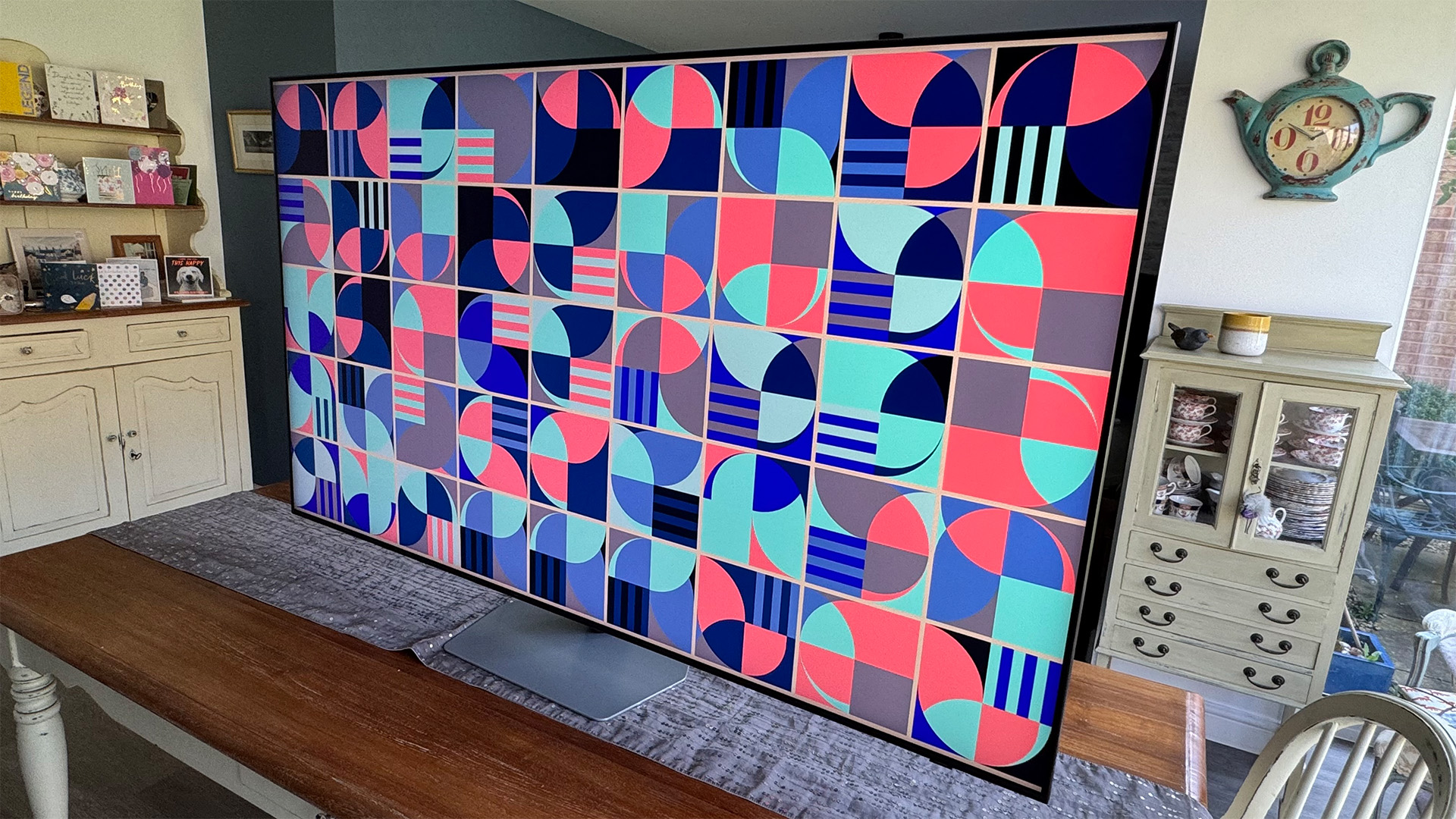
Happily, all of the QN90F’s talk of premium Quantum Dots and extreme AI turns out to be much more than mere PR bluster, helping it produce typically beautiful images capable of adapting to pretty much every possible picture quality need and taste – as well as pretty much any possible room environment.
Starting with the relatively punchy images delivered by the default (once you’ve turned off the unhelpful Eco mode ‘brakes’) Standard preset that’s traditionally felt like Samsung’s natural LCD TV picture home, the QN90F delivers a spectacular picture driven by a brilliant combination of seriously high brightness and rich, deep black colours.
The light extremes are even delivered within the same frame when necessary to a degree we’ve simply never seen before on a Samsung LCD TV. That’s thanks to the QN90F’s local dimming system doing a superior job of removing almost all traces of haloing around stand-out bright objects, without having to dim those bright objects down as Samsung TVs have tended to do in previous LCD generations.
The resulting contrast feels spectacularly expansive but also, crucially, immaculately controlled in a way that hasn’t always been the case with Samsung LCD TVs in years gone by. In particular, bright highlights retain bags of detail and subtle shading rather than looking clipped and hollow, and near-black picture information is produced without being accompanied by noise or backlight instability.
The same premium refinement and precision can be felt in the Standard preset’s vibrant colours. Yes, saturations are rich and vibrant, but there’s enough subtlety in their tones even in their punchiest areas to ensure that they never slide into looking cartoonish or flat. On the contrary, there’s a solidity to objects and a sense of depth to backdrops that feels almost as immersive and three-dimensional as the irresistible effect achieved by Sony’s Cognitive XR processor. Except the Samsung set underpins its efforts with a bit more brightness and colour volume.
Sharpness is never something Samsung 4K TVs tend to lack, and this continues to be the case, especially in the Standard preset. Again, though, on the QN90F the sharpness feels more natural and less forced than usual, as if any sharpening enhancements are being applied more intelligently and on a more localised basis than they have been before.
With some careful tweaking of the Standard Mode’s Picture Clarity options (namely, turning off the Auto setting, choosing Custom, and then deactivating noise reduction and setting the judder and blur reduction components to level three or four), the QN90F retains its sharp touch even with fast motion in a 24p movie scene.
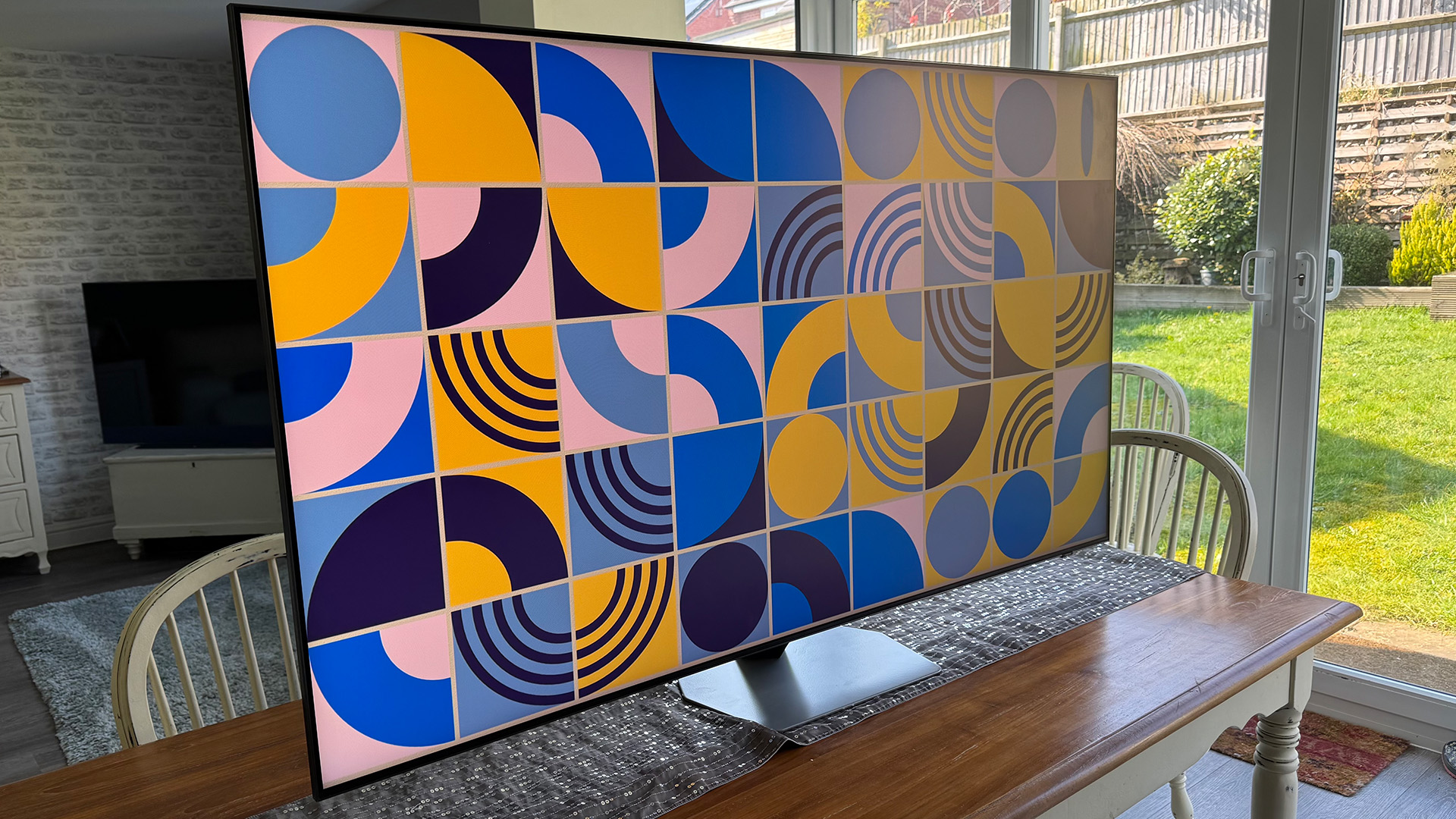
Even Samsung’s system for converting SDR to HDR works better than expected if you opt to try it. This is presumably another positive outcome related to Samsung’s latest AI processor.
The very idea of turning SDR into HDR will have some AV fans running for the hills, of course. Rest assured, though, that the QN90F is capable of handling SDR as SDR really well, if that’s what you want.
In the Standard mode, the TV opens up the SDR brightness and colour range substantially, but never in a way that leaves anything feeling unbalanced or jarring. If you absolutely have to see both SDR and HDR looking as they were designed to look, though, the Filmmaker Mode does a great job of this, instantly delivering the flatter but more nuanced looks of ‘accurate’ images without sacrificing black level or backlight controls as heavily as most LCD TVs.
Colours with HDR content perhaps lose a touch more saturation than we personally would like them to in the Filmmaker Mode, especially in comparison with similar modes on the best OLED TVs. But you actually acclimatise to this quite quickly after switching from the punchier Standard mode. Plus, the 65QN90F has a trick up its sleeve that OLEDs don’t: retaining much more brightness with full-screen bright HDR content than OLEDs can, resulting in a slightly more consistent HDR brightness experience that’s particularly helpful in bright rooms.
The QN90F’s AI talents make their presence felt one last time in the TV’s excellent upscaling of HD sources, which adds the necessary millions of extra pixels in real time with so much subtlety and precision that, with relatively clean HD sources, at least, it’s hard to believe you’re not watching native 4K.
Even ground-breaking AI can’t make the QN90F completely perfect out of the box, though. So, as well as the Standard mode Picture Clarity tweaks mentioned earlier, we’d also recommend nudging a Shadow Detail feature up a point or two from its default setting to stop subtle details being crushed out in very dark picture areas. The Standard mode also exhibits some distractingly stark delayed brightness ‘jumps’ during sharp dark-to-bright and bright-to-dark cuts, which you need to switch the Local Dimming setting from Standard to High or Low to fix.
There’s one limitation of the QN90F’s pictures, too, that you can’t tweak your way around: no support for the Dolby Vision HDR format. Though, as we’ve seen already, Samsung’s own Dynamic Tone Mapping system with HDR10 sources works exceptionally effectively. Plus, the set does of course support the HDR10+ format that Samsung played a key role in developing as an alternative to Dolby Vision.
Sound
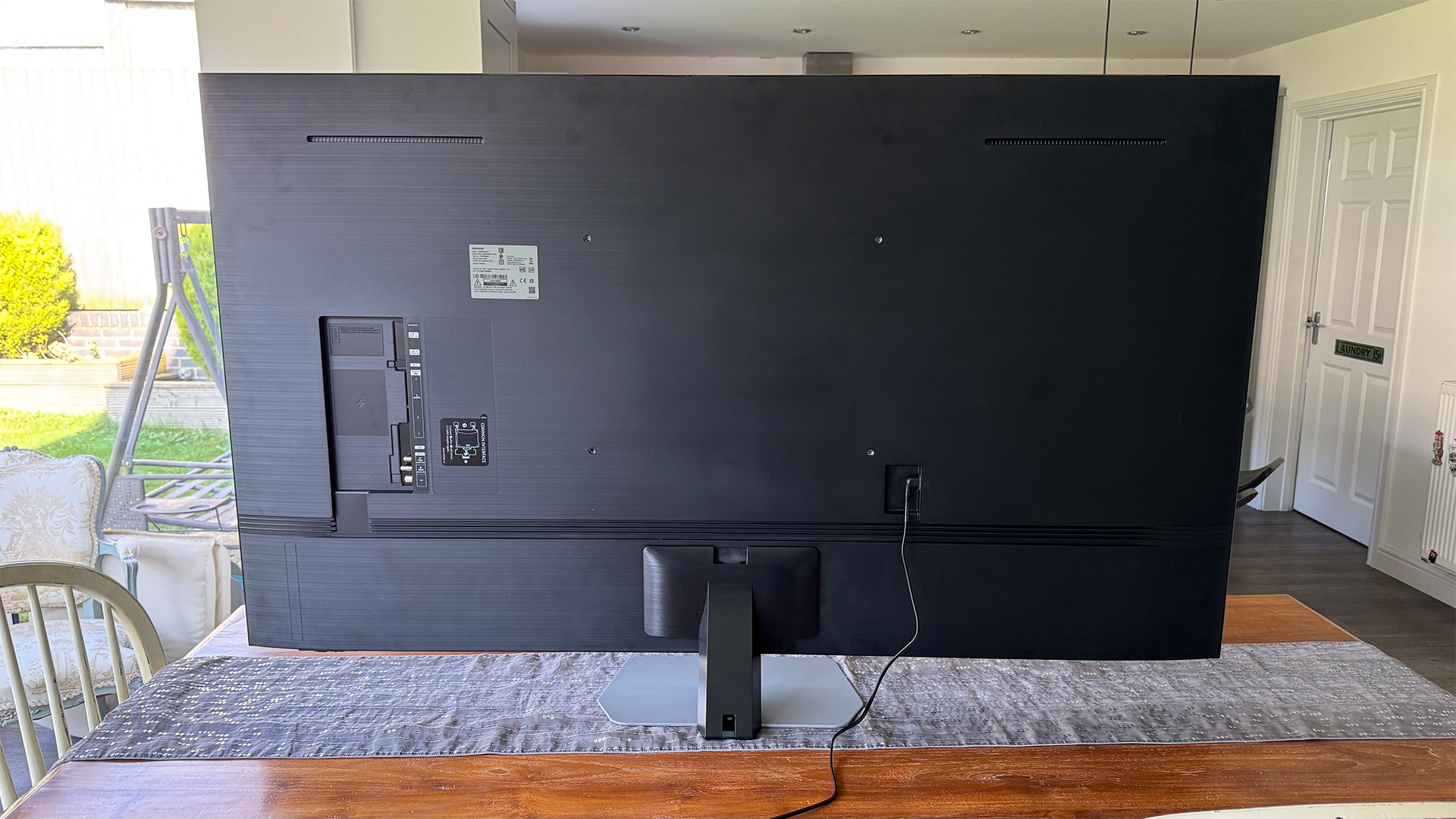
Just as the QN90F’s pictures need some tweaking from their out-of-the-box settings to get the best from them, so it is with its sound. While Samsung’s TV is capable of handling Dolby Atmos soundtracks, they initially sound rather small in scale and stuck inside the TV. There just isn’t the sort of scale that the cinematic images deserve to be partnered with.
Fortunately, Samsung has equipped its flagship 4K TV with an Amplify sound mode, and activating that is like waking the TV up. The speakers now project sound clear of the TV’s bodywork, helping it paint a much larger and more engaging soundstage. This soundstage expansion also unlocks the talents of Samsung’s Object Tracking Sound system, as you notice how dialogue and noisy objects seem to be producing their sound from just the right spot on or off the screen.
The Amplify mode encourages the QN90F’s speakers to find much more low-frequency response than they were before, too, giving our favourite action movie soundtracks a much heftier sense of scale and dynamic range. This happens, too, without bass sounds causing excessive crackling, buzzing or dropouts.
Shrill trebles can sound a bit ‘electronic’ and peaky, though, and even the Amplify mode can’t ultimately make the QN90F’s sound quite as satisfying as that of some other TVs in Samsung’s 2025 range.
Verdict
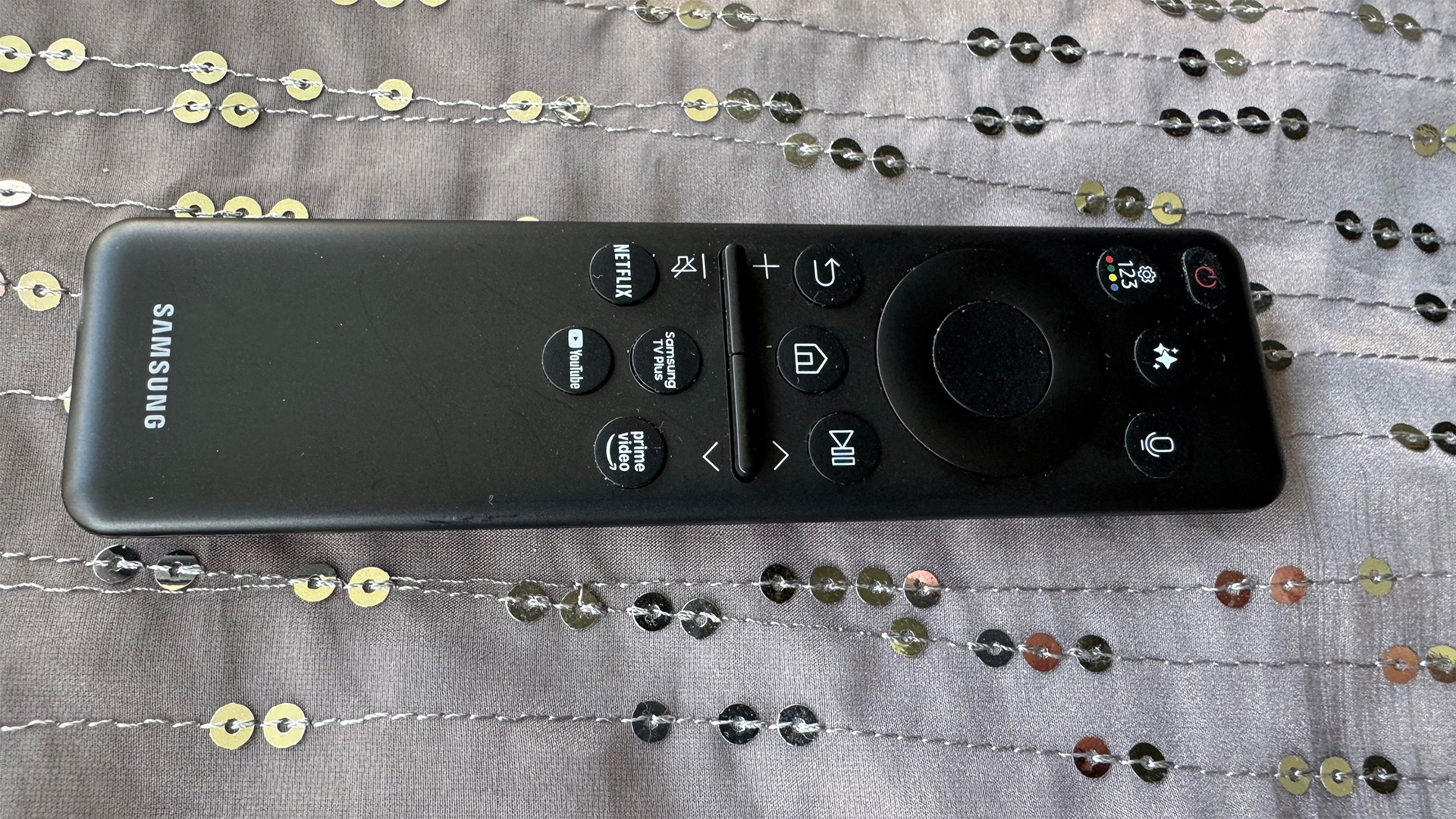
With much of the chatter in the AV world focusing this year on Samsung’s latest OLED TVs, it feels like the QN90F has slightly slipped under the AV world’s radar.
So let’s put that right here and now by stating that, while it might thread a rather narrow price needle between this year’s best-value LCD TVs and the sort of mid-range OLED TVs that many AV enthusiasts will be perpetually drawn to, it is a truly premium LCD TV equipped with enough unique attractions to make it yet another serious contender in 2025’s uniquely crowded premium TV space. Especially for people looking for a high-end TV to go into a bright room.
SCORES
- Picture 5
- Sound 4
- Features 4
MORE:
Read our review of the LG C5
Also consider the TCL C8K
Best TVs: flagship OLEDs and budget LED sets tried and tested
John Archer has written about TVs, projectors and other AV gear for, terrifyingly, nearly 30 years. Having started out with a brief but fun stint at Amiga Action magazine and then another brief, rather less fun stint working for Hansard in the Houses Of Parliament, he finally got into writing about AV kit properly at What Video and Home Cinema Choice magazines, eventually becoming Deputy Editor at the latter, before going freelance. As a freelancer John has covered AV technology for just about every tech magazine and website going, including Forbes, T3, TechRadar and Trusted Reviews. When not testing AV gear, John can usually be found gaming far more than is healthy for a middle-aged man, or at the gym trying and failing to make up for the amount of time he spends staring at screens.
You must confirm your public display name before commenting
Please logout and then login again, you will then be prompted to enter your display name.
